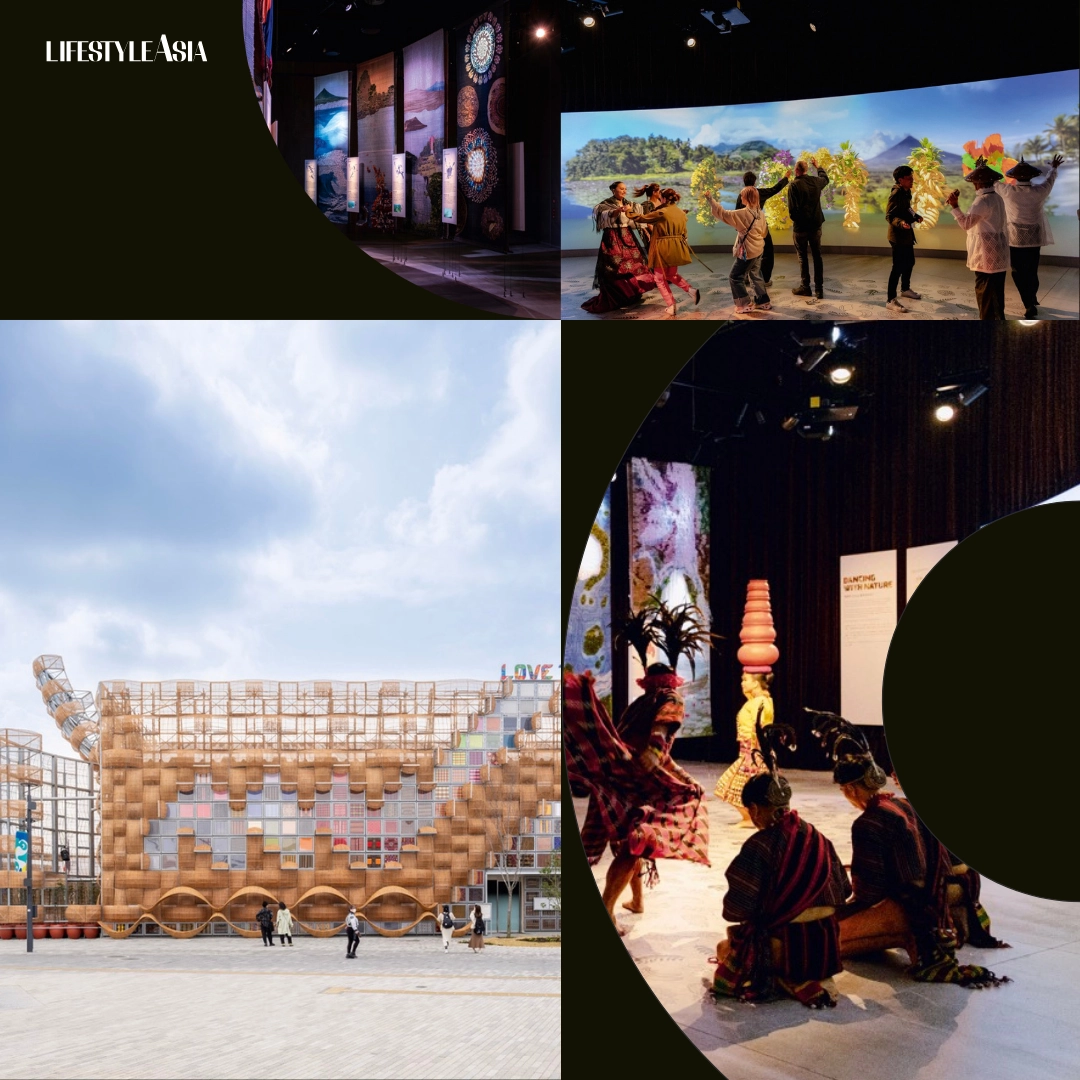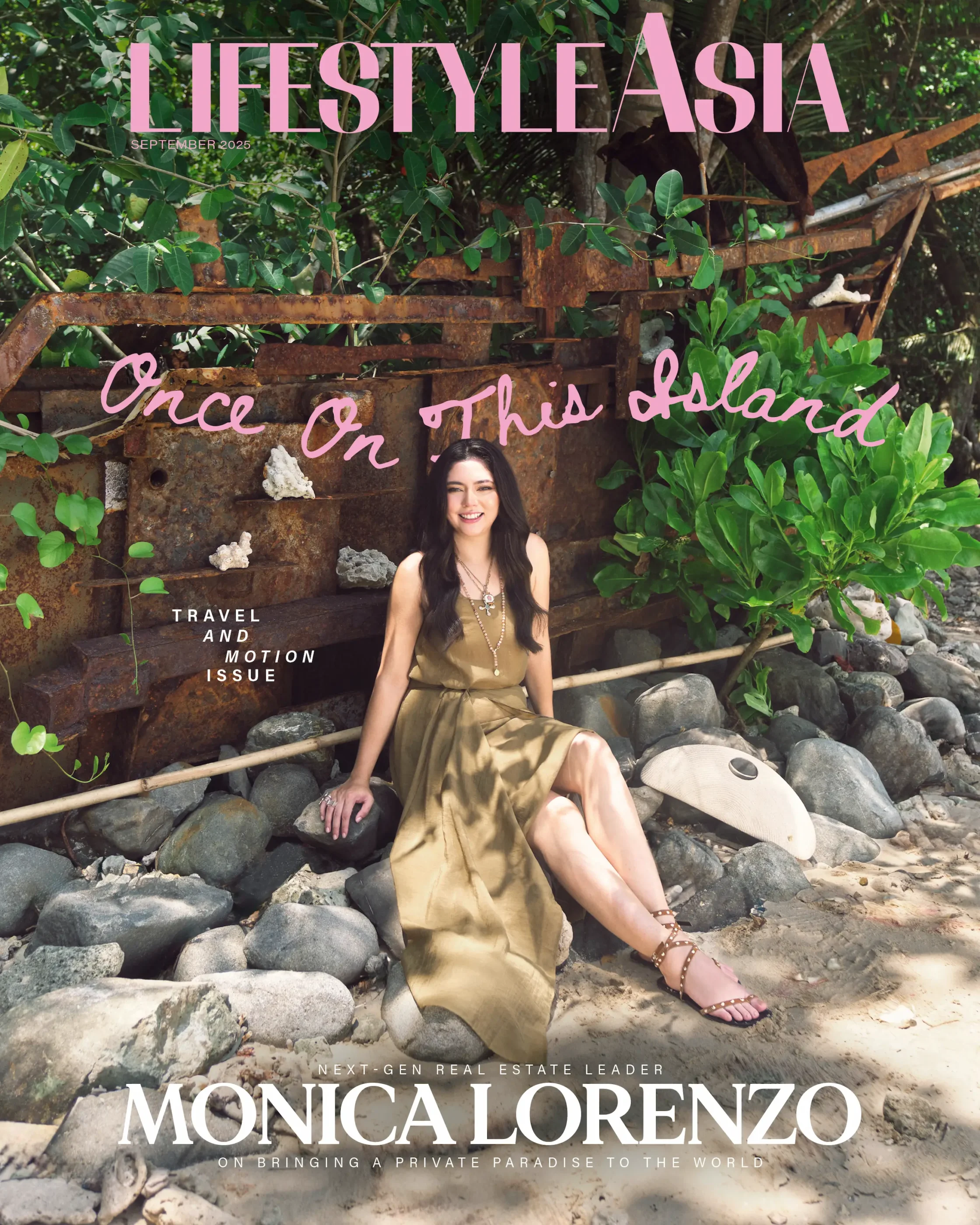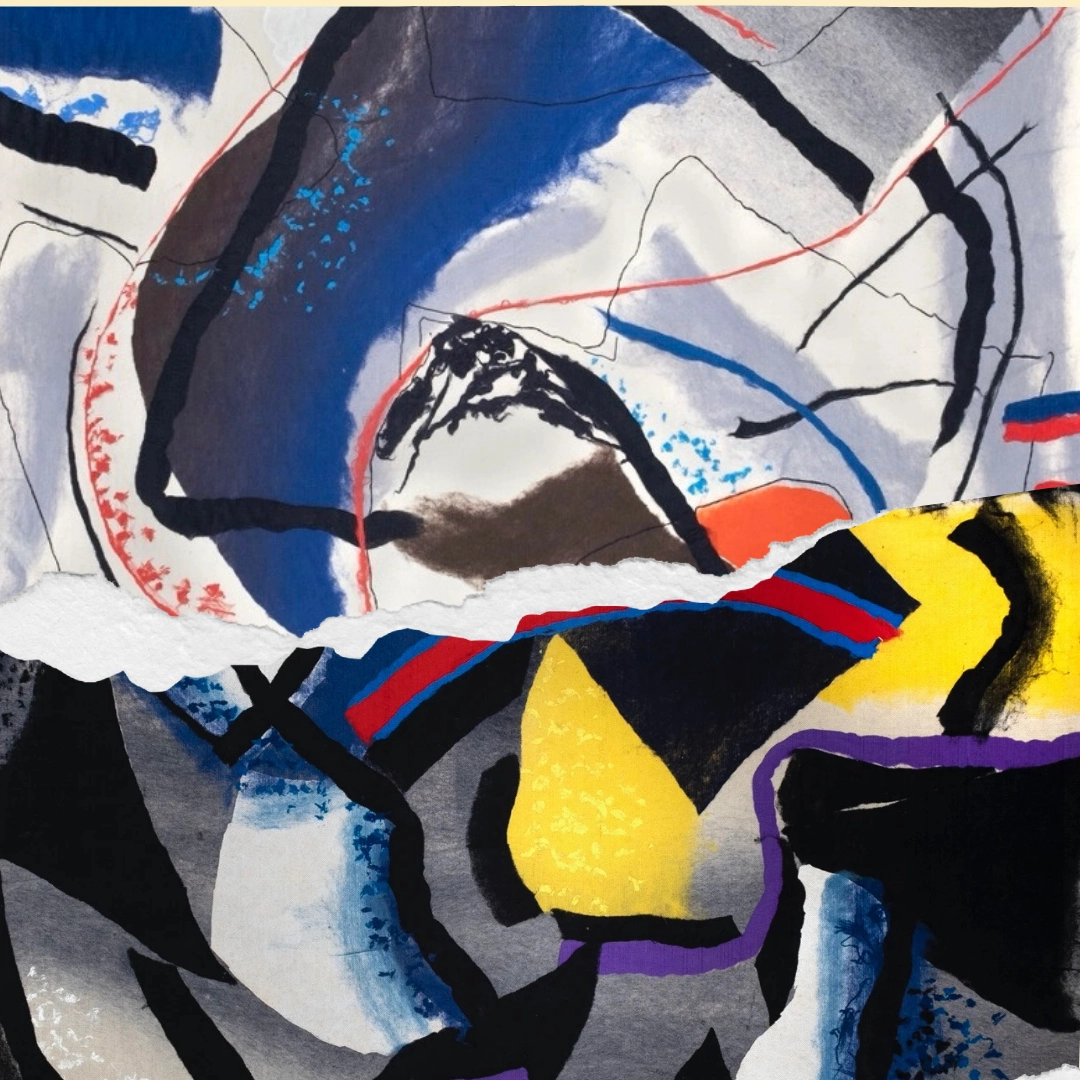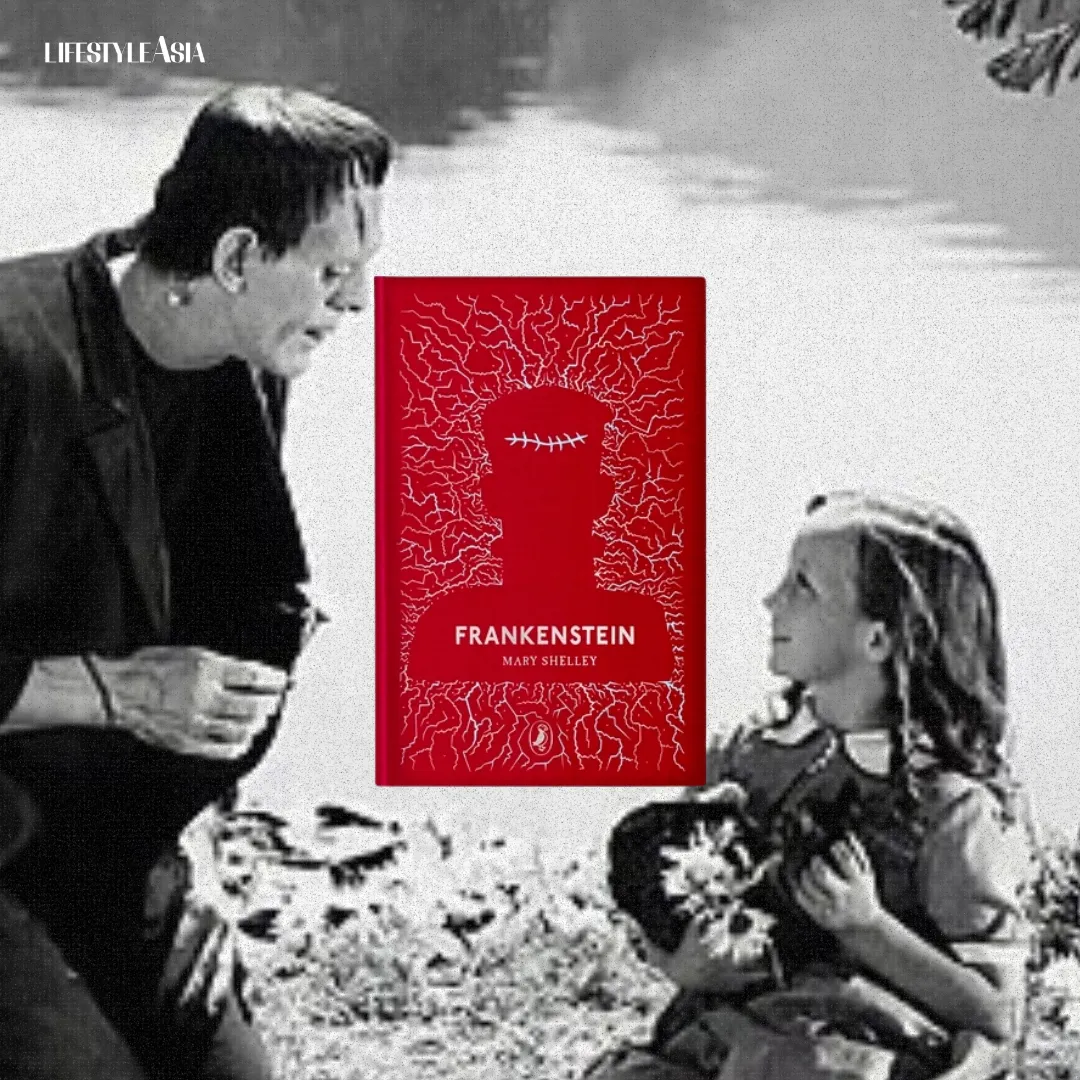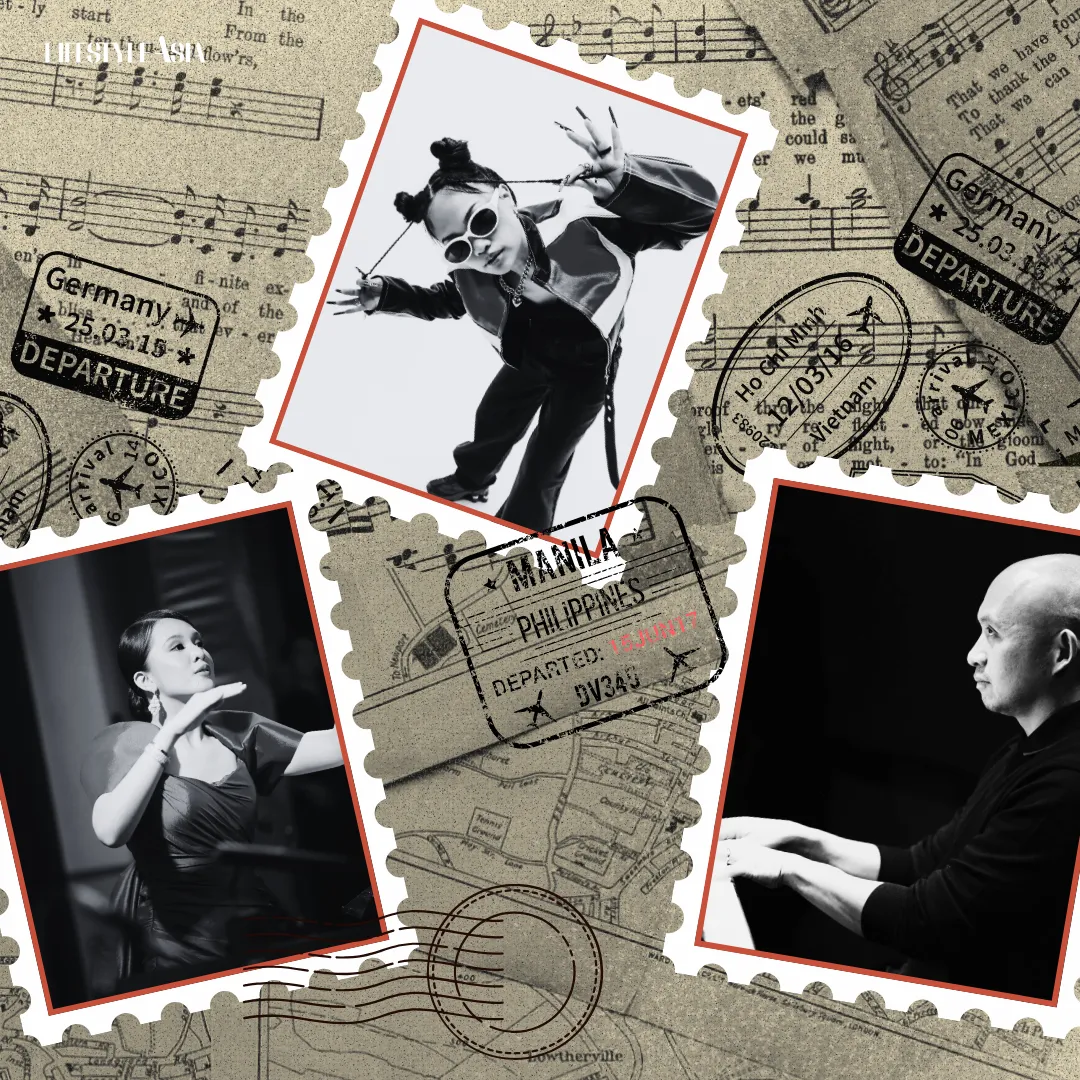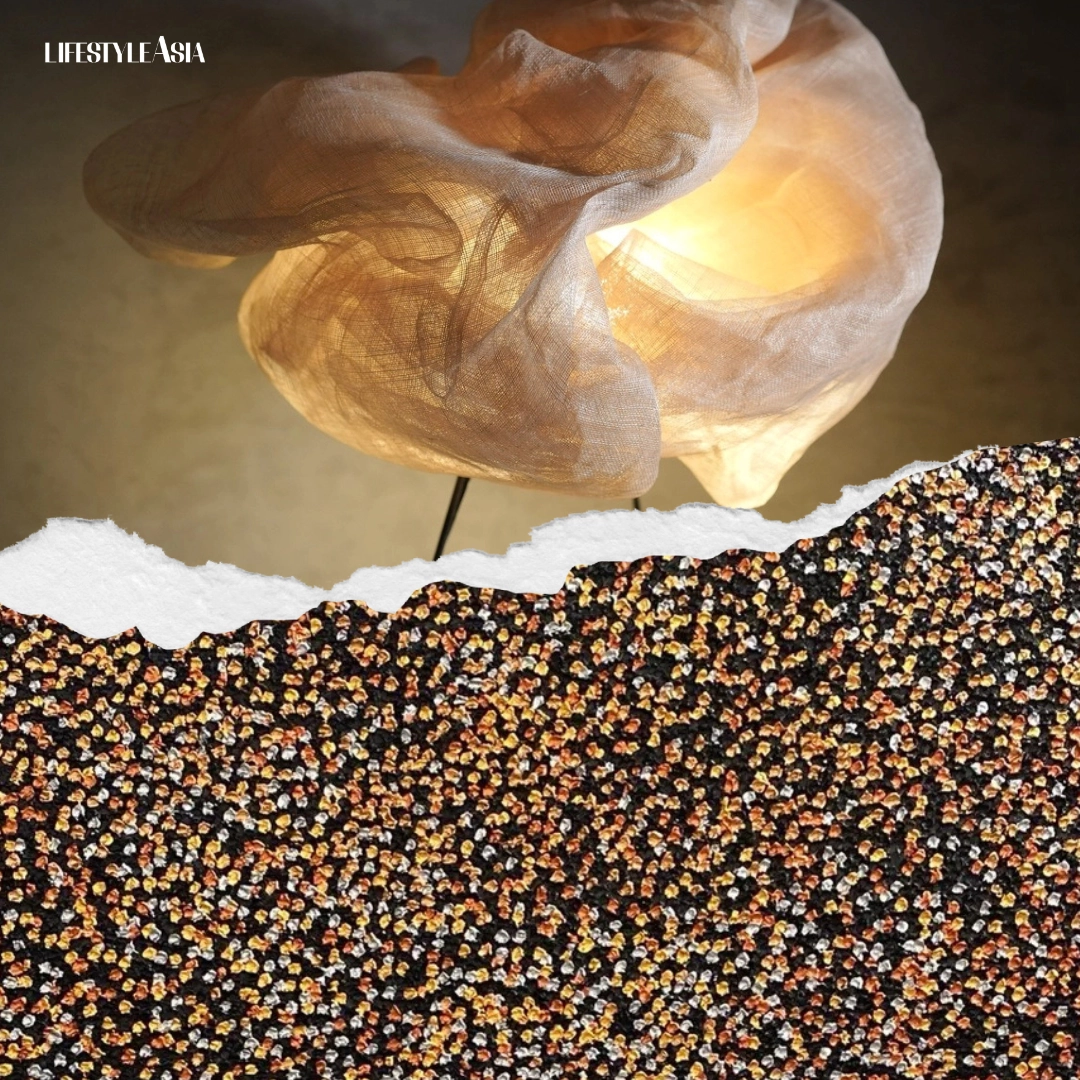At the Osaka Expo 2025, the Philippines showcases its cultural diplomacy through the pavilion “Woven Together For a Better Future,” where traditional weaving and dance meets interactive technology.
It’s a cool spring morning in Osaka. Somewhere nearby, cherry blossoms (isn’t that the first thing we all think of when we imagine the Land of the Rising Sun?) perform an ephemeral dance: swaying, spinning, and pirouetting in the breeze. Amid this serenity, a booming echo of a gong. The Philippine Pavilion at Expo 2025 is ceremonially opened.
A human river of visitors enters the impressive rattan pavilion. They’re greeted first by a light show, then the traditional kinakulangan dance of the Maranao people, before being invited to dance themselves with the interactive screen. Like the cherry blossoms somewhere out there, the movement transforms static symbols into living expressions.
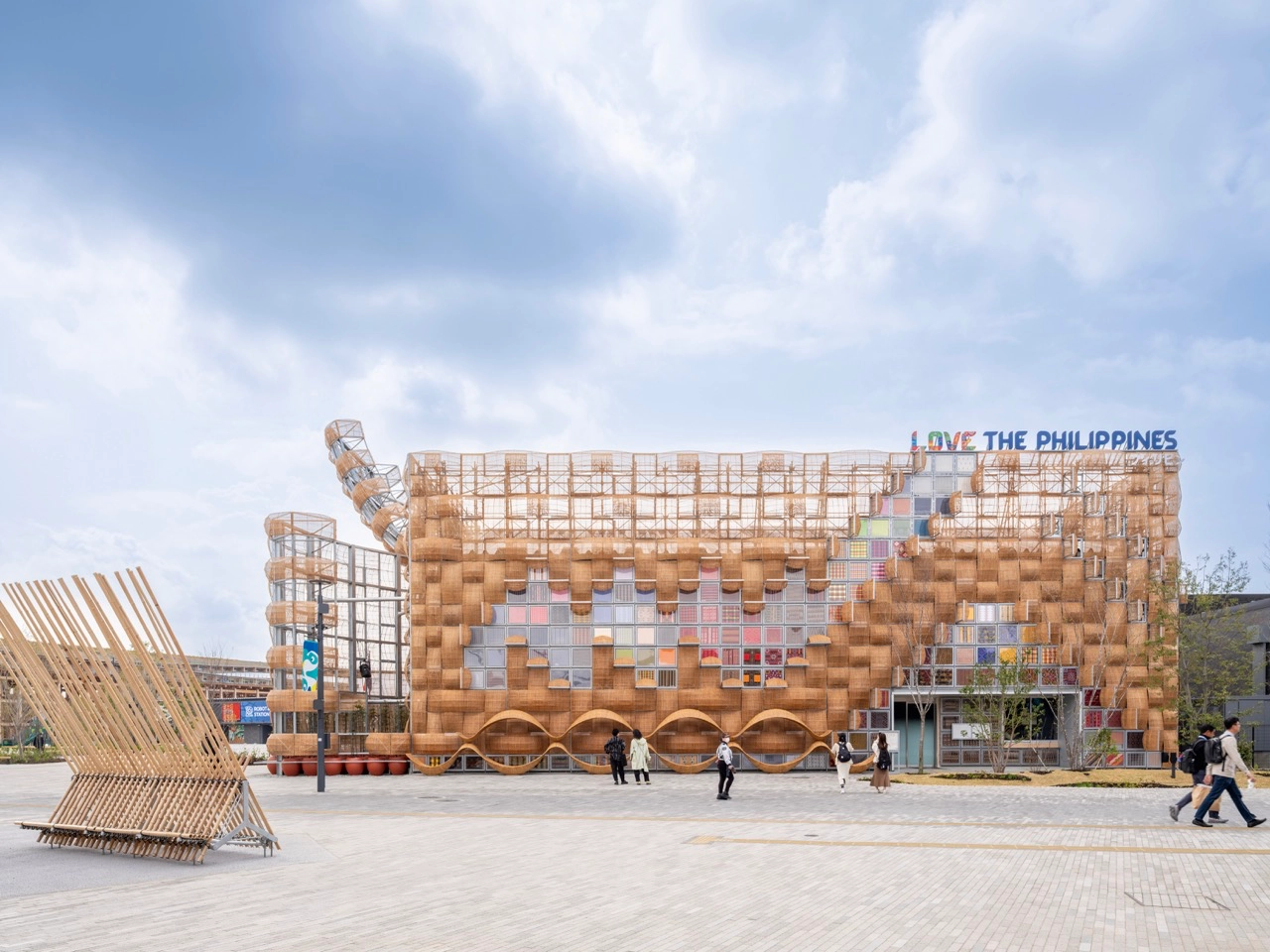
Here, at the intersection of heritage and diplomacy, without even saying a word just yet, the Philippines makes its statement. Based on Expo 2025’s theme of “Designing Future Societies for Our Lives,” the Philippines offers a multi-sensory narrative about connection, heritage, and sustainable futures through its “Woven Together For a Better Future” pavilion.
What we’re witnessing is a carefully choreographed exercise of what political scientists and diplomats call “soft power.” This is the ability to shape international perception through culture, values, and stories rather than military might or economic leverage.
READ ALSO: Backstage: Hinabing Hiraya at Expo 2025 Osaka
At The Osaka Expo 2025, All The World’s A Stage
As a veritable snapshot of the best of times even amid the worst of times, the history of world’s fairs and expos carries a great sense of optimism. Traced back to the 1851 Great Exhibition of Industry of All Nations at London’s Crystal Palace, these global gatherings have evolved from industrial showcases (with an undercurrent of colonial chest beating) into complex cultural diplomacy exchanges.

“It is a platform for the world to come together and have that communication,” says Marga Nograles, Chief Operating Officer of the Philippine Tourism Promotions Board (TPB) and Secretary General of the Philippine Organizing Committee for the World Expo 2025. “So that we can understand how, together, we can make the world better.”
Away from the power dynamics of trade negotiations or security alliances, countries craft narratives that highlight their unique contributions to global culture and human progress. Our pavilions become embassies of ideas, with architecture and exhibits working as our ambassadors through a vocabulary of visual diplomacy.
“Everyone tells a unique story around the world,” Marga adds. “So we’re all sharing that with each other.” And what is the Philippine story?
Weaving Movement Into Structure
Iconic images of world’s fairs past include the unveiling of the Eiffel Tower (Paris, 1889); the Ferris Wheel and Midway (Chicago, 1893); and the Space Needle rising defiantly in the midst of Cold War tensions and the Space Race (Seattle, 1962). These physical structures act as architectural exclamation points and declarations, transforming showcases into symbols.
Commissioned by the Philippine Organizing Committee, led by the Department of Tourism (DOT) and the TPB Philippines, the visionary design team included Carlo Calma Consultancy, Inc. as Lead Architectural Firm and Designer, Chochay Garcia as Creative Producer, Architect Yuki Kanou as Executive Architect and Lead Project Manager, and Tellart as Guest Experience Designer.
The pavilion represents the largest collaboration of Filipino community weaves in one project: 121 communities, 2,331 weavers, and 212 handwoven textiles have come together to create this embassy of Filipino creativity. Inside, the space is anchored by 18 handwoven art pieces representing various regions of the country.
“This facade is a statement,” says Architect Carlo. “We wanted the structure itself to breathe and move with the stories it holds. It reflects who we are as Filipinos—always in motion, always evolving, always expressive.”
The focus on weaving carries multiple layers of significance. On a literal level, it highlights our rich textile heritage. On a metaphorical level, it speaks to the interconnectedness of Filipino communities across the archipelago, as well as that aforementioned heritage. And, on a diplomatic level, it presents a powerful counter-narrative to technological determinism. As societies advance, we need not abandon traditional crafts and human connection.
“As we design future societies, as we go into the tech of these things, in the Philippines, what we are telling the world is that what we value the most is our human connection,” Marga explains. “What we want to do is really continue empowering our people. That is why the theme of our pavilion is Woven. Nature, culture, and community woven together for a better future.”
While the pavilion celebrates traditional craftsmanship, it doesn’t shy away from embracing technological innovation. At the heart of the pavilion is “Dancing with Nature,” an interactive installation that weaves guests into the Filipino narrative in a surprisingly playful way. Using generative algorithms, it magically converts human forms and movement into fluttering leaves, blooming flowers, or schools of fish swimming through a digital ocean.
Dance Of Cultural Exchange
While the physical structures are what we tend to associate with world’s fairs, perhaps because they are what remain after the event concludes, in the moment itself there’s always a human element that breathes.
“The pavilion showcases a lot of textiles and weaves from different parts of the country,” explains Dennis Marasigan, Vice President and Artistic Director of the Cultural Center of the Philippines, and the Creative Director for the daily performances at the Philippine Pavilion.
“For the performances, what we’ve curated are dances emanating from different regions of the country that showcase those textiles and those weaves.”
“If you go around the pavilion, you see the weaves and the textiles in a static manner,” Dennis continues. “With the dances, we show them being used and being worn by the dancers.”
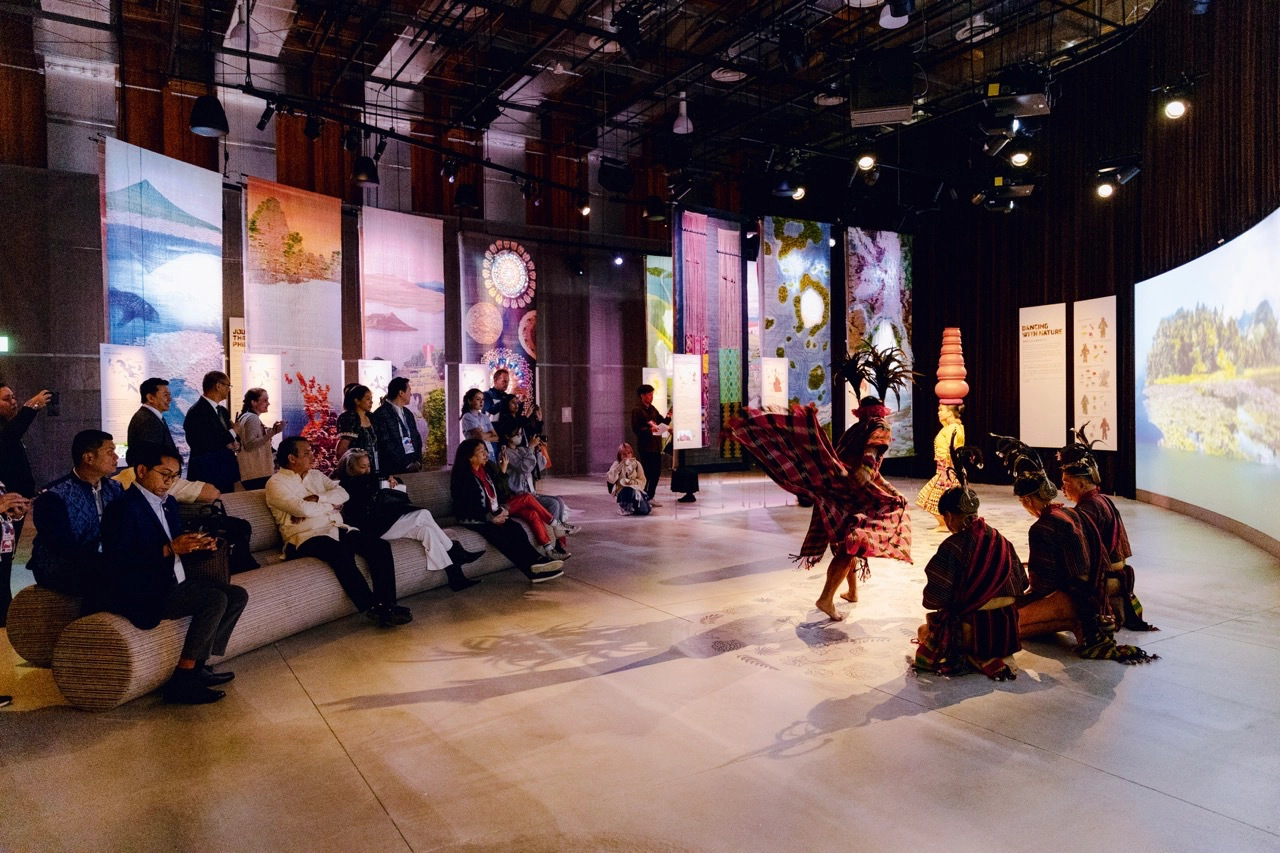
Inside the pavilion, the Ramon Obusan Folkloric Group (ROFG) presents several dances throughout the day, including the kinakulangan opening number. “When the dancers perform, and it is a performance, they are showcasing their grace, the way they move, and, of course, also the cloth and the regalia they have,” Dennis elaborates.
The commitment to authenticity runs deep in these performances, particularly the choice of ROFG, founded by National Artist Ramon Obusan. Percival “Percy” Carrell, the Project Manager and Creative Director of ROFG for the World Expo, emphasizes their anthropological approach: “Our performances are as close to the original [as possible], they are communal-based staging. What you see is almost the same as in the field, we bring that actual look to the stage.”
Like how a cherry blossom becomes more than a symbol once it flits in the breeze, performance and movement makes something alive; and by extension, easier to understand as part of our lives.
Beyond Bananas: The Philippines On The Global Stage
Dennis shares an anecdote about a member of the Japanese media who, after touring the Philippine Pavilion and watching a performance, exclaimed that they had not known anything about the Philippines beyond us being an exporter of bananas.
This seemingly simple revelation has echoes like the sound of a gong. Japan indeed imports the majority of their bananas from the Philippines, about three out of four bananas in Japan are from our islands. It generates $1 billion in annual sales and provides livelihood to more than 700,000 Filipinos. Yet economic relationships, while vital, often reduce nations to their commodities rather than their cultures and communities.
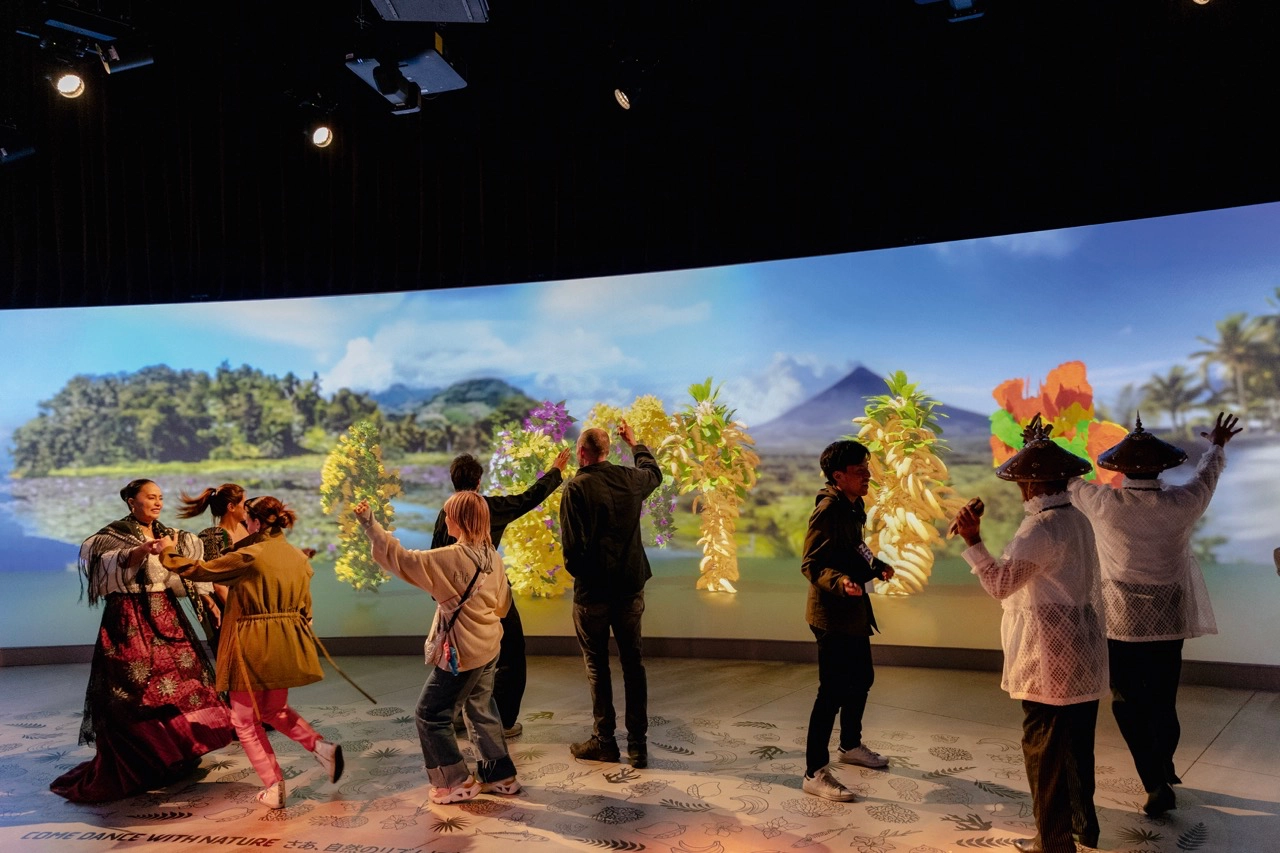
The soft power of cultural exchange partly lies in its ability to humanize trade statistics. When a Japanese visitor learns about Filipino weaving traditions, witnesses the beauty of a Maranao dance, and even transforms into a bunch of bananas through an immersive digital art screen, the bilateral relationships become much richer. This is soft power at work, enriching economic ties with cultural understanding.
Soft Power In Motion
“The Philippine Pavilion is our invitation for the world to connect with the heart and soul of the Filipino people and to discover the many reasons to Love the Philippines,” says Tourism Secretary Christina Garcia Frasco. “We hope to inspire travelers to explore our 7,641 islands, experience the depth of our culture, marvel at the excellence of Filipino creativity, and be moved by the stories of triumph and resilience in our communities.”
Why the kinakulangan dance as the opening number? This inquisitive writer asks. Dennis confesses, “It was actually a practical decision. We needed a ceremonial opening for the pavilion and the most logical thing to do was [a dance with] a gong.” Symbolic with pragmatic execution. Effective diplomacy.
In the grand choreography of international relations, world expos offer unique movements where nations can present themselves on their own terms with their best foot forward (right before left). Through a careful curation of space, material, performance, and even digital experience, the Philippines has woven its narrative into the global consciousness.
This article originally appeared in our June 2025 issue.
Photos courtesy of The Tourism Promotions Board of the Philippines (unless specified).
